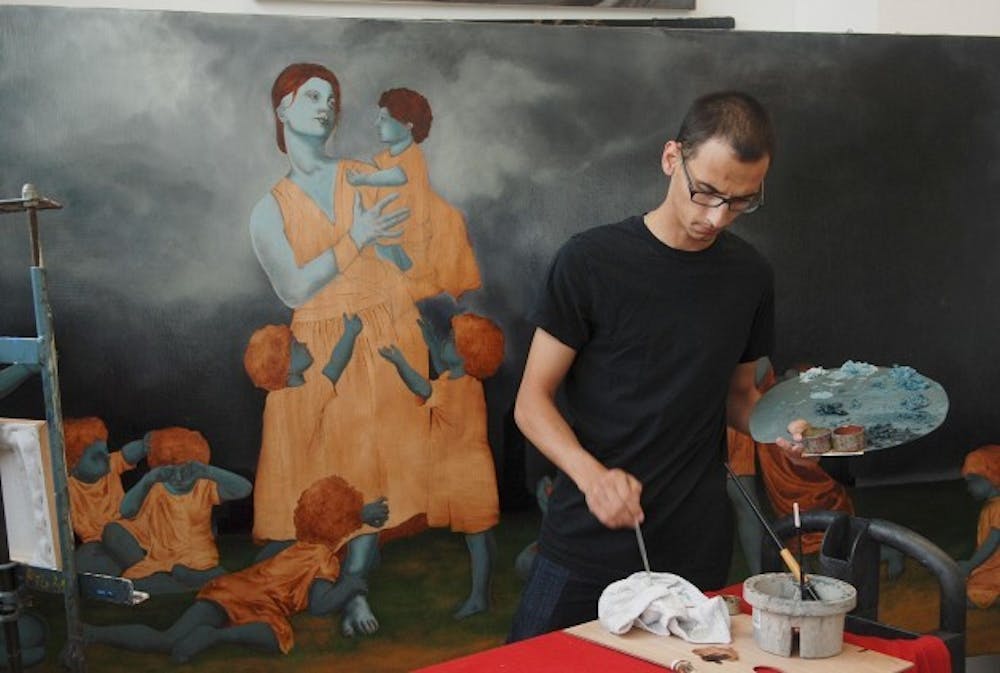Hey, heard this one? Two students walk into a bank -
To afford art supplies.
Students frequently hear about the $200 organic chemistry textbook or the $100 physics manual, but it's interesting to see how art majors weigh in when it comes time to pay in. With fees for limited lab time, expensive but crucial computer programs and pressure to acquire professional grade supplies, the starving artist is no joke on campus.
With science-oriented courses, student labs have rented beakers and minerals to share and only pay for damages that occur during the semester. The university has less to give for its array of art majors who don't expect to receive more than one thing.
"The classroom [is all the school supplies,]" said Caraline Stocker, a senior fine arts major. "You pay for your paints, canvases, brushes, etc."
Students may be given extra supplies lying around depending on their professor, but they are limited and insubstantial compared to the semester requirements.
Stocker explained that her first two years were financially brutal. As freshmen, students start with nothing but a few basic tubes of paint left over from high school. Now as a senior, she has built a small reserve of supplies she can lean on. Spring semester and final project estimates, however, arealready in the air.
"I heard two girls the other day talking about getting a student loan for their senior thesis portfolio," Stocker said.
Professors have high expectations that heavily weigh on students financially. To achieve gallery quality work, materials can set a wallet back a few hundred or more, and professors aren't afraid to call a student out for using cheap paints - poor materials reflect poor grades.
According to Caitlin Chojecki, a senior former music major now minor, while an additional $100 lab fee gives the student access to necessary programs for their studies, the labs themselves can be difficult to access.
"[The labs are] usually locked, [have] time limits or [are occupied by] a class," Chojecki said.
This limited access to a workspace, along with the Center for the Arts closing hours, leave students to fend for themselves when requiring lab programs that aren't accessible on the average campus computer.
Some studio spaces can be rented for extended periods of time, according to Chojecki, but spaces can average about $80 an hour. In order to get projects finished on time, most students are forced to buy the programs to continue working outside of class.
For example, Chojecki paid her mandatory $40 lab fee to use Pro Tools, a recording/production software that is difficult to use on anything but a Mac operating system, but preceded to purchase part of the Pro Tools set online for $200 to avoid the hassle of juggling inconvenient lab hours, school, and a full-time work schedule.
This expensive inconvenience is a common occurrence on campus.
"The Adobe program online costs about $1,300," said Kitty Lee, a senior graphic design major. "Though incomplete sets go for cheaper online and UB Micro previously sold it for around $300."
Lee, who in one day spent$200 on materials for one class, says that it's just realistic to own programs such as Adobe Creative Suite, which is required for her coursework instead of constantly dealing with the difficulties that come from on-campus labs.
It's not just the programs; books aren't cheap either. According to Lee, a book for her "History of Photography" course was barely thicker than her finger, yet cost her $120.
While students in science or humanities have the luxury to sell back books despite high costs at the beginning of the semester, art majors will find themselves surrounded by empty matte and broken-in paintbrushes by the time finals come around.
Less than a month later, they'll have to do it all over.
Email: arts@ubspectrum.com





